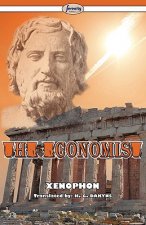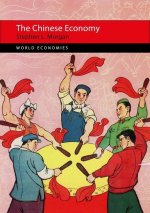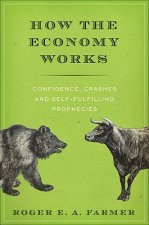
Code: 07175758
Japan's Industrious Revolution
by Akira Hayami
This book explains in fascinating detail how the fruits of the Industrious Revolution are what have supported Japan since the eighteenth century, improving living standards and leading to the formation of the work ethic of modern ... more
- Language:
 English
English - Binding: Hardback
- Number of pages: 130
Publisher: Springer Verlag, Japan, 2015
- More about this

61.44 €

Low in stock at our supplier
Shipping in 13 - 16 days
Potřebujete více kusů?Máte-li zájem o více kusů, prověřte, prosím, nejprve dostupnost titulu na naši zákaznické podpoře.
Add to wishlist
You might also like
-

Royal Assassin
12.30 € -16 % -

Deadpool: Samurai, Vol. 2
10.58 € -18 % -

Fairy Tale
32.28 € -3 % -

RHS Botany for Gardeners
20.47 € -16 % -

Question of Honor
14.72 € -23 % -

Lonely Planet Under the Stars - Europe
22.49 € -13 % -

Germinal
10.18 € -17 % -

Vegetarian
12.40 € -

Gentle Discipline
18.96 € -5 % -

Problem With Forever
9.68 € -21 % -

Nightlights
10.58 € -13 % -

Business Vocabulary in Use Third Edition
36.21 € -

Katanagatari 2
25.92 € -15 % -

I'm Rather...Fond of You.
19.16 € -9 % -

Assassin's Quest
45.70 € -18 % -

How to Draw: Harry Potter
15.83 € -25 % -

GMAT Foundations of Math: 900+ Practice Problems in Book and Online
30.36 € -4 % -

Думать как собака. Как научиться понимать свою собаку и избежать проблем в ее воспитании
16.54 € -5 % -

Ethnographische Beitrage zur Kenntnis des Karolinen Archipels
87.57 € -2 % -

On the Shoulders of Giants: LotFP Compatible
10.48 € -6 % -

Ten Thousand Apologies
23.10 € -18 %
Give this book as a present today
- Order book and choose Gift Order.
- We will send you book gift voucher at once. You can give it out to anyone.
- Book will be send to donee, nothing more to care about.
More about Japan's Industrious Revolution
You get 154 loyalty points
 Book synopsis
Book synopsis
This book explains in fascinating detail how the fruits of the Industrious Revolution are what have supported Japan since the eighteenth century, improving living standards and leading to the formation of the work ethic of modern Japan.§§The arrival of the Sengoku Period in the sixteenth century saw the emergence and domination of government by the warrior class. It was Tokugawa Ieyasu who unified the realm. Yet this unity did not give rise to an autocratic state, as the shogun was recognized merely as a main pillar of the warrior class.§§Economically, however, from the fourteenth century, currency payments for sh en nengu (taxes paid to the proprietor) became standard, and currency circulation began, primarily in the central region. Under Tokugawa rule, organized domestic coinage of currency began, opening the way to establishing a national economic society. Also, agricultural land was surveyed through cadastral surveys known as kenchi . Land values were converted in terms of rice, so the expected rice yields for each village were assessed, and the lords used this as a benchmark for imposing taxes.§§In the sixteenth and seventeenth centuries, Japan experienced a great transition, and conditions for peasants, agriculture, and farming villages underwent great changes. Inefficient traditional agriculture using peasants in a state of servitude was transformed into highly efficient small-sized farming operations which relied on family labor. As production yields increased due to labor-intensive agriculture, the profits obtained by the peasants improved their living standards. The stem-family system became the norm through which work ethics and even literacy were transmitted. This very change was the result of the industrious revolution in Japan.§§The book thus presents the framework of the facts of pre-industrial Japanese history and depicts pre-modern Japan from a macroscopic point of view, showing how the industrious revolution came about. It is certain to be of great interest to economists and historians alike.§
 Book details
Book details
Book category Books in English Economics, finance, business & management Economics Economic history
61.44 €
- Full title: Japan's Industrious Revolution
- Subtitle: Economic and Social Transformations in the Early Modern Period
- Author: Akira Hayami
- Language:
 English
English - Binding: Hardback
- Number of pages: 130
- EAN: 9784431551416
- ISBN: 4431551417
- ID: 07175758
- Publisher: Springer Verlag, Japan
- Weight: 3554 g
- Dimensions: 235 × 155 × 243 mm
- Date of publishing: 19. May 2015
Trending among others
-

Global Economic History: A Very Short Introduction
9.27 € -28 % -

Debt
21.48 € -20 % -

Why Nations Fail
16.54 € -6 % -

World Order - Our Secret Rulers
27.64 € -

Progress and Poverty
29.75 € -28 % -

Great Crash 1929
12.80 € -29 % -

Suppressed History of American Banking
13.81 € -19 % -

Gods of Money
24.71 € -

Capital in the Twenty-First Century
23.40 € -5 % -

Long Twentieth Century
23.60 € -14 % -

The Wisdom of Crowds
16.13 € -19 % -

Fifty Things that Made the Modern Economy
11.59 € -19 % -

Extraordinary Popular Delusions and the Madness of Crowds (Harriman Definitive Editions)
30.16 € -28 % -

Dark Towers
13.91 € -22 % -

Courage to Act
29.75 € -16 % -

Finance as Warfare
28.14 € -

Essays in Persuasion
93.93 € -

Economist
10.99 € -

Why Nations Fail
29.05 € -9 % -

Money Changes Everything
21.08 € -17 % -

Power of Gold
17.95 € -24 % -

Capitalism without Capital
15.93 € -20 % -

Exorbitant Privilege
12.30 € -28 % -

Wall Street Trilogy
35.81 € -

Monetary History of the United States, 1867-1960
69.41 € -17 % -

Capitalism in America
13.71 € -22 % -

Capital in the Twenty-First Century
19.06 € -36 % -

Capitalism without Capital
43.78 € -10 % -

Concise Economic History of the World
183.72 € -

Wall Street and FDR
13.31 € -28 % -

World in Depression, 1929-1939
36.11 € -

Double Entry
15.43 € -18 % -

Japanese Economy
30.86 € -4 % -

Commercial Revolution of the Middle Ages, 950-1350
28.95 € -

How The West Was Lost
12.20 € -22 % -

Grand Pursuit
15.12 € -20 % -

Chinese Economy
30.86 € -4 % -

Indian Economy
42.87 € -

Bourgeois Dignity
22.19 € -17 % -

New Economic History of Argentina
69.10 € -

Markets in the Name of Socialism
47.92 € -

Grand Pursuit
19.66 € -18 % -

Industrial Collaboration in Nazi-Occupied Europe
101.39 € -2 % -

Russian Economy
37.73 € -

Marketplace of Revolution
19.36 € -18 % -

WHAT WOULD THE GREAT ECONOMISTS DO
17.75 € -19 % -

How the Economy Works
24.71 € -18 % -

Elgar Companion to Neo-Schumpeterian Economics
75.66 € -10 % -

French Economy
33.99 €
Collection points Bratislava a 2642 dalších
Copyright ©2008-24 najlacnejsie-knihy.sk All rights reservedPrivacyCookies


 15549 collection points
15549 collection points Delivery 2.99 €
Delivery 2.99 € 02/210 210 99 (8-15.30h)
02/210 210 99 (8-15.30h)